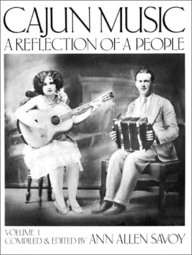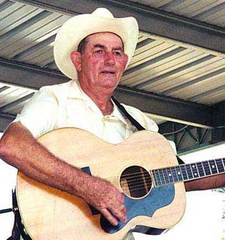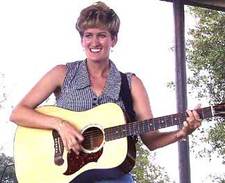There is an abundance of teaching materials on how to play Cajun accordion and fiddle. This is in stark contrast to the lack of information on how to play Cajun guitar.
This site is intended to fill a need by providing guidance on how to play Cajun guitar and is especially geared towards beginning players. In addition, chord charts for a large number of Cajun songs and tunes are provided.
The author of this page is not claiming to be an expert. But is a person who, in learning Cajun guitar since only 2005, has found a lack of instructional information on either the Web or video/DVD. The hope is that what has been learned will be of help to others. This page will be updated as more is learned!
It is emphasized that, until recently, Cajun music was never written down. Therefore, many musicians and bands played their own variation of any particular song*. There are no hard rules! These are only guidelines to help you get some "lay of the land".
*Herein, "song" refers to both songs and tunes not having vocals.
Strumming
 The traditional style of the Cajun rhythm has a certain percussive sound. Originally, it was the guitar that kept the beat for the melody instruments and this is still true in traditional bands and most jam sessions. The most percussive style is the "chunk" sound. The more strings used to form the chord, the more "chunk" results. Barre chords, which use all strings, are preferred by some players; however, they are not required and quickly tire the hand.
The traditional style of the Cajun rhythm has a certain percussive sound. Originally, it was the guitar that kept the beat for the melody instruments and this is still true in traditional bands and most jam sessions. The most percussive style is the "chunk" sound. The more strings used to form the chord, the more "chunk" results. Barre chords, which use all strings, are preferred by some players; however, they are not required and quickly tire the hand.
Cajun music is for dancing! The two types of dances are the two-step and the waltz. Two-steps are in 4/4 time; four beats per measure. A two-step "chunk rhythm" includes a strong, discreet bass note for the first and third beats (downbeats) and a muffled strum for the second and fourth beats (backbeats). The waltz is in 3/4 time with three beat per measure. For the waltz, again there is a strong, discreet bass note for the first beat (downbeat) followed by muffled strums for the second and third beats (backbeats). There are no pauses; you make a noise with every beat/count.
The downbeat is the tone of the chord. For example, for a G-chord, the downbeat is G (see starred strings (*) at Chord Fingering Diagrams). To obtain the strong, discreet downbeat followed by a muffled backbeat, do the following. Hold the strings, especially the target bass string (*), down tightly for the downbeat and then relax your hand for the backbeat. The discreet downbeat provides the rhythmic support for the melody instruments, analogous to the bass guitar. The relaxed hand will provide a muffled, percussive sound to the backbeat. When generating the downbeat one does NOT want to be particularly careful to hit only the target bass string; hit two/three strings in the general area of the bass string. For the backbeat, strum those strings that are higher in pitch than the bass note. For example for the G-chord, the backbeat is made by strumming the ADGBe strings.
Because the guitar has to back up even the accordion, a guitar that is loud is an advantage. The bigger the guitar and the darker the wood, the louder it will be. In a jam, remember to play softly when the singer sings, especially if there is no amplification.
There are other, more sophisticated styles in which to strum the guitar for Cajun music. For a description, see Cajun Music a Reflection of the People by Ann Savoy (1984) Bluebird Press, Inc. P.O. Box 941 Eunice, La. 70535, pp. 7-11.
One objective of this site is to provide guitarist Sam Broussard's knowledge of chord changes for a variety of Cajun songs (See Sam Broussard's Content). Again the caveat being that, since historically Cajun music has been learned by ear, not all musicians/bands play a song the same way. Therefore, the chords changes presented here for a song may not exactly match a particular recorded version or what's played at a jam. However, the information provided should enable you to either immediately play along with recordings and other musicians or provide a close starting point for making modifications.
Cajun Song Structure and Arrangement

Famous Cajun guitarist D. L. Menard
Some Cajun songs have only one melody, while other songs have two melodies. If a song has two melodies, one melody is called the "Tune" or "A" part, while the other melody is called the "Turn" or "B" part. Some people call the Turn the "Bridge". Usually, the Tune is played first. If the song has a vocal part, the vocal is sung only to the Tune. The guitar part may be the same for the Tune and Turn, or it may be different.
The structure of Cajun songs is such that the melody instruments alternate taking the lead, i.e., playing the melody. The order of playing is usually, accordion, vocal, fiddle, which is repeated two or three times, and then the accordion ends with a final lead.
Usually, for the accordion and fiddle the Tune is made up of a melodic phrase played twice then the Turn is a different melodic phrase played twice. Again, the vocals only sing to the Tune. So the format would be: accordion (tune phrase twice + turn phrase twice), vocals (set to one or two tune phrases), fiddle (tune phrase twice + turn phrase twice), repeat 2-3 times, and final accordion (tune phrase twice + turn phrase twice). This will become clearer when you listen to the music and play along.
Of course, not all songs have the above structure. For a song in which there is not an accordion, the fiddle and vocals alternate. So the format would be: fiddle (tune phrase twice + turn phrase twice), vocals (set to one or two tune phrases), repeat 2-3 times, and final fiddle (tune phrase twice + turn phrase twice). If there is no turn, everyone just plays the tune phrase twice. Even if the song has a turn, not every melody player will play it (in a jam, not all players will know the turn). After the vocals, sometimes the fiddle or accordion will fill in the "missing" turn. You have to listen to hear if they go to the turn or stay on the tune. Thus, it's important to keep track of where the song is. For more modern Cajun bands and many Zydeco bands, the guitar takes a lead. However, NOTHING in Cajun music is set in stone!
Throughout this series of melody players taking their leads, the guitar plays rhythm. Thus, the guitar is VERY important for the continuity of the song. Basically, you are backing up each melody player; you are playing with each person in turn. Are you up for it?! And remember if you decide to sing, you still have to play!
Guitar Novices
If you are a complete novice to playing guitar, you are very lucky to have picked Cajun music to learn. You only need to learn four chords to become able to play many Cajun songs and, even better, many songs can be played with just the chords of G and D.
I suggest you start out learning to play a song in the key of G that uses only the chords of G and D. Some examples are Choupique Two-step, J'ete au Bal, Evangeline Special, Quoi Faire, Old Fashioned Two-step, and Flammes D'enfer. The names of CDs having these songs and the chord changes for those particular recordings can be found at Sheridan's Chord Charts.
Note that the 4-finger G chord makes it particularly easy to switch between G and the 3-finger D because the ring-finger stays anchored. When learning to transition from chord to chord it is important to make sure that you "lead" with the finger that will form the bass note because that is the string to be used on the very next downbeat. (One has that downbeat to get the other fingers in position for the backbeat, which are relaxed anyway.) When first learning, practice just moving the "bass-note fingers" back and forth. For example, in transitioning from G to D, the bass-fingers are the middle finger for the four-finger G-chord and the ring-finger for the D-chord (which is already in position).
It took me about 8 months to be able to play along in a jam. Persistence is needed in the beginning, after that the rewards roll in. Play at least 15 minutes per day to maintain your level; to improve, you must play more.
There is a certain "macho" attitude in playing Cajun music. This may have evolved from the fact that, historically, nothing was written down. I have never seen anyone use sheet music at a Cajun jam and I think there would be a negative attitude about doing so. I try to memorize as many songs as possible. Or if I don't know the song by heart, knowing the key and which chord it starts on helps me just play along by ear. Nonetheless, I try not to buy into the "attitude" and always bring my charts, which I refer to as a reminder of songs I don't know by heart. (I'd rather check than screw-up the song.) Again, just knowing the key and the first chord is usually enough to play by ear. Of course, checking the chart is only possible if the melody lead says what's going to be played next! Some lead players will start playing without saying what the song is and, in fact, they may not remember the name. So it is important to develop the skill of "hearing" the chord changes. Practice with CDs. It gets easier with practice and recognizing certain patterns. For example, many two-steps alternate two measures of each chord. Lacassine Special, High Point Two-Step, and Hip & Taiau are examples. Another common pattern is 1151; Old Fashioned Two-step, Port Arthur Blues, and Mamou Two-step.

Christine Balfa from Balfa Toujours
Helpful Resources
- Cajun Guitar75 : By Jerilee Wei - historical description of Gajun guitarists and guitar resources
- iTunes : A great way to store your music on your hard-drive. Use to play along from the computer.
- Amazing Slow Downer : Absolutely great for altering the speed, balance, and pitch as well as repeating specific loops for learning. Has very helpful staff.
- Guitar Lessons by Brian : Guitar Lessons for All Abilities and All Ages. Private Lessons and Online Resources!
- Metronome Online
- Cajun jams in Louisiana, see The Patsy Report
- Cajun, Creole, and Zydeco music, dance and cultural event information, see Arn.org
- Cajun events, dance instruction, and accordion instruction: check out www.ZydecoLesson.com
- Culture, music & dance from Southwest LA & Southeast TX, see www.BayouDancer.com
- Your Cajun-playing friends!
Books with music & chord changes:
- Cajun Music a Reflection of the People by Ann Savoy (1984) Bluebird Press, Inc. P.O. Box 941 Eunice, La. 70535.
- Ye Yaille, Chere! By Raymond E. Francois (1990) Thunderstone Press, 123 Florida Court, Lafayette, LA 70503 - you can order from Mr. Larry Miller at: boncajun@akool.com